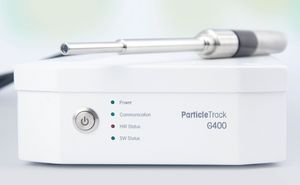- Crystallization and precipitation, recrystallization, polymorphism chemistry, protein crystallization, lactose crystallization
- Particle size distribution
- Formulations and product development
- Flow assurance in oil and gas production
Analyze particles in various states (opaques and viscous liquids, emulsions, slurries, and more). Our particle size characterization tools are also used in a variety of industries including pharma, food and beverages, cosmetics, and more.








